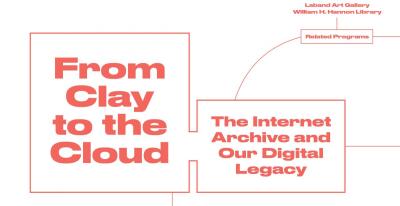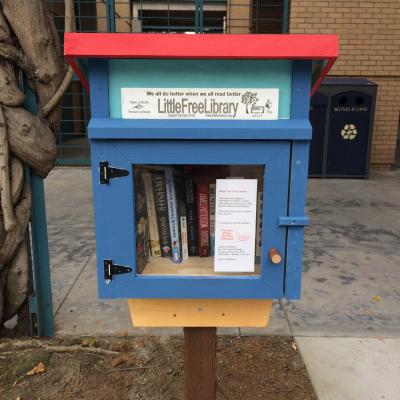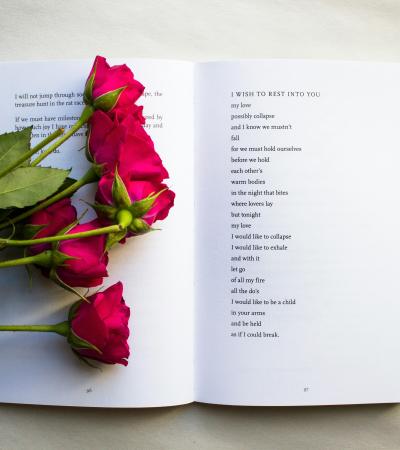One of my first planning meetings as the new outreach and communications librarian for the William H. Hannon Library was with the director and curator of the Laband Art Gallery, an on-campus exhibition space in the College of Fine Arts at Loyola Marymount University. Over the past few years, the Hannon Library and the Laband Gallery have developed a synergistic relationship built on shared vision and trust, a relationship that has increased the impact we could achieve as single institutions.

In the fall of 2015, the Hannon Library and the Laband Gallery developed programming around a spring exhibition entitled "From Clay to the Cloud: The Internet Archive and our Digital Legacy." The exhibition set out to "[explore] the human impetus to preserve our knowledge, our memory, and our cultural heritage" by showcasing the preservation work of the Internet Archive and the clay sculptures of Internet Archive staff, created by Nuala Creed. The exhibition also highlighted the digitization work of the Hannon Library. In what one might call a "productive performance piece," LMU librarians would spend a few hours each day working in the gallery and scanning works from our Archives & Special Collections using the Internet Archive's Table Top Scribe (on loan). Not only did this give us the opportunity to quickly digitize some of our rare manuscripts, but being a piece (quite literally) of the exhibit allowed us to talk with visitors about the role of academic libraries in the preservation of human knowledge.
Given the close connection between the theme of the exhibition and the mission of the library, specifically "meeting others where they are" and "promoting critical inquiry and reflection," we created a series of events to inspire our community to think more broadly about the role of librarians and archivist in the sharing economy and the preservation of knowledge. By collaborating with the Laband Gallery on the planning and promotion of these events (as well as that of the exhibition itself), we were able to exponentially increase our marketing reach. We combined both our email lists and mailing lists in order to reach a wider community of users, split the cost of sending mailers to a few thousand residents in the neighborhoods immediately surrounding the campus, and cross-promoted each other's events on our social media channels.
Some of the events included:
DIY Archiving Workshop
One of our most popular events was a Saturday morning workshop led by Digital Services Librarian Mary Wahl (California State University, Northridge) and targeted to LMU staff and community members. During this two-hour session, Mary spoke to attendees about how to care for their "digital shoebox": all the files that accumulate on our computers, tablets and cell phones. Mary translated practices and conventions used by archivists and metadata librarians into tips and techniques for non-professionals, including identifying file types, weeding collections, developing file-naming schemes and choosing reliable storage options. The library provided a light breakfast for attendees and the Laband hosted a private tour of the exhibition following the workshop.
Ask-an-Archivist Panel
The Internet Archive is unlike any other archive ever constructed. In his presentation at the opening of the Laband exhibition, founder Brewster Kahle called it "a digital library of Alexandria." As information professionals, we know that archives come in many different shapes and sizes, but how do we communicate that to our users? In February, we organized a panel of archivists from across Southern California to tackle this. Targeting the event to junior faculty and graduate students, we asked the panelists to speak to the relationship between archivists and academic researchers, in addition to more practical information such as acquiring access to specialized collections. The panel lasted about an hour and a half and was moderated by a faculty member from the Department of History. The library provided light refreshments.
Little Free Libraries

As a fun way to promote both the exhibit and the library's events, we worked with the university's facilities department to purchase six Little Free Libraries and surreptitiously install them around campus (including one inside an academic building!). Not only did this provide us with a place to advertise the exhibition and related library programming, but the little libraries have been extremely useful as a conduit for the surfeit of volumes set aside for our annual book sale. If the number of comments on Instagram are any indication of success, we made an immediate impact on students!
I cannot think of a better word than "blessed" to describe the way that I feel coming into a new position having such a strong partnership already established. Like Hannon Library, the Laband Gallery begins planning exhibitions at least a year in advance and, while specific program planning doesn't happen until much later, having a thematic target in place helps to focus our efforts at an early stage. I am already looking forward to planning for spring of next year!



